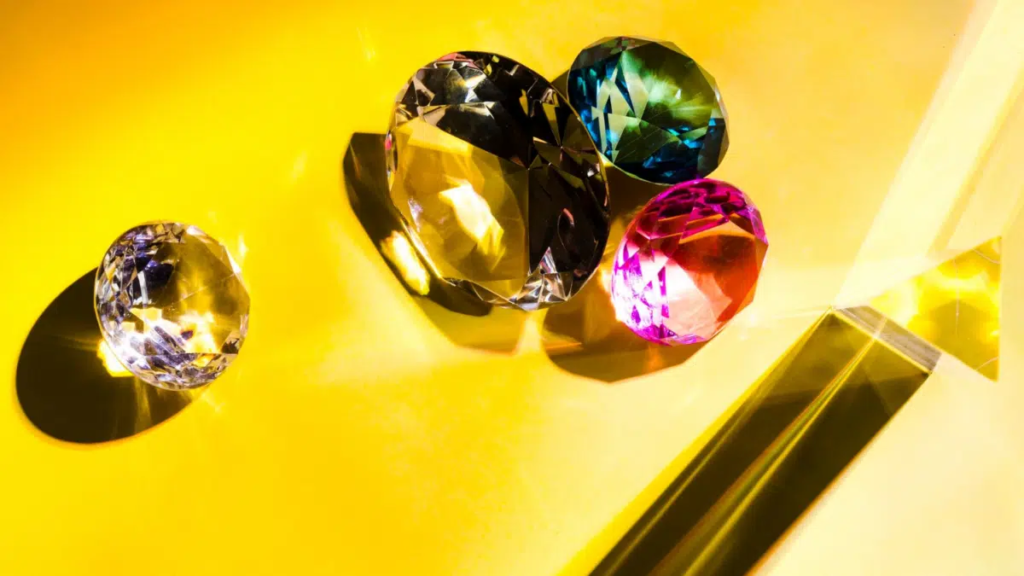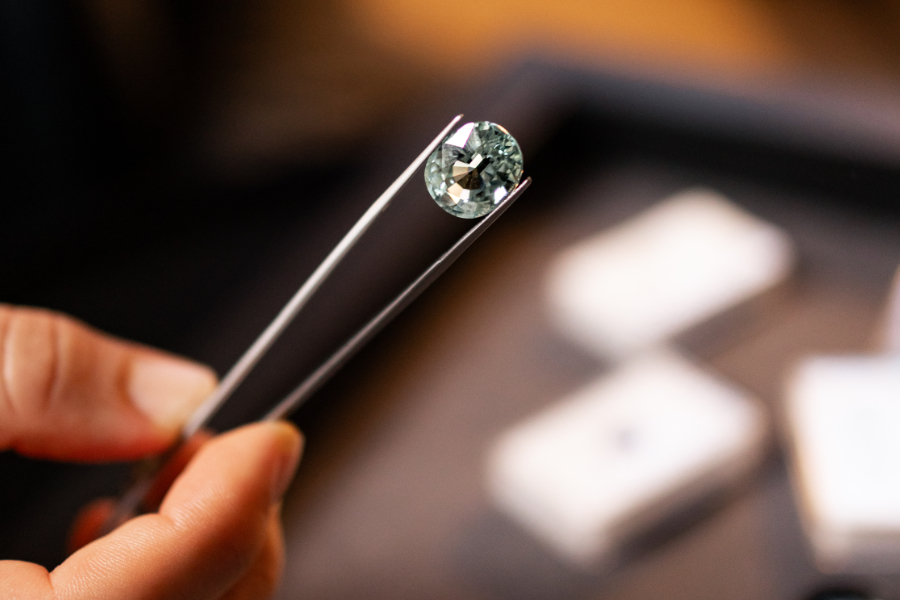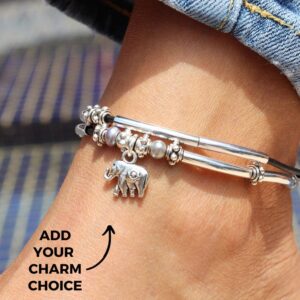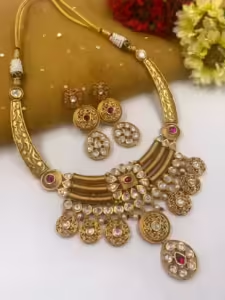Gemstones are cherished for their beauty, rarity, and value. Whether embedded in rings, necklaces, or earrings, they can elevate any piece of jewelry. However, distinguishing authentic gemstones from imitations can be challenging. With the rise of synthetic and treated stones, knowing how to identify real gemstones is crucial for anyone investing in precious jewelry. In this guide, we’ll explore the steps and tips for recognizing genuine gemstones, the importance of certification, and how the Best Jewellers in Dehradun can help you find authentic, high-quality pieces.
1. Understanding the Types of Gemstones

Before diving into gemstone identification, it’s important to understand the different types of gemstones available:
- Natural Gemstones: These are mined from the earth and have undergone no human intervention other than cutting and polishing.
- Synthetic Gemstones: These are man-made in laboratories but have the same chemical composition as natural stones.
- Treated Gemstones: Natural stones that have been enhanced through heat, radiation, or other processes to improve their appearance.
- Imitation Gemstones: These are fake stones made from glass, plastic, or other materials designed to resemble the real thing.
2. Visual Examination of Gemstones

One of the simplest ways to assess the authenticity of a gemstone is through a detailed visual inspection. Here’s what to look for:
- Color: Authentic gemstones tend to have a rich and vibrant color, but they may also have natural inclusions (tiny imperfections). In contrast, fake or synthetic gemstones often have a too-perfect color, with little to no variation or inclusions.
- Clarity: Real gemstones, especially diamonds, may have slight internal imperfections or inclusions, while synthetic or fake stones might appear flawless. However, clarity can vary among different stones, and some natural gemstones like emeralds typically have more inclusions.
- Luster: The way a gemstone reflects light can provide important clues about its authenticity. Real gemstones have a natural brilliance and reflect light in a unique way. Imitation gemstones often lack this shine or have an unnatural gleam.
- Weight: Natural gemstones tend to be denser and heavier than imitations. Holding a real gemstone against a synthetic or imitation one will reveal a noticeable difference in weight.
3. Scrutiny with a Loupe or Magnifying Glass

Jewelry experts and gemologists often use a jeweler’s loupe, a small magnifying tool, to closely examine gemstones. A magnifying glass can also work if you don’t have access to a loupe. Under magnification, look for the following features:
- Inclusions: Natural gemstones usually contain inclusions (small imperfections within the stone). These may include air bubbles, mineral deposits, or fractures. Synthetic and imitation stones are often flawless or have very different types of inclusions.
- Facet Edges: The edges of facets (the flat surfaces of the gemstone) in natural stones are usually sharp and clean, while synthetic stones may have smoother, less precise edges.
- Wear and Tear: Over time, genuine gemstones will show slight wear, especially if worn regularly. Imitation stones, made from softer materials like glass, may scratch more easily.
4. Thermal Conductivity: The Fog Test

A quick and easy test to identify real gemstones, especially diamonds, is the fog test. Hold the stone close to your mouth and breathe on it as you would when fogging up a mirror. Real diamonds disperse heat quickly, so the fog will disappear almost immediately. On the other hand, fake stones like cubic zirconia retain heat and stay fogged up for longer.
5. The Water Test for Gemstone Authenticity
For certain gemstones like diamonds, a simple water test can help determine authenticity:
- Fill a glass with water.
- Drop the loose gemstone into the glass.
- If the stone sinks, it is likely real. If it floats, it’s probably fake or made from a material lighter than a real gemstone.
6. Scratch Test: Hardness of Gemstones

Each gemstone has a specific hardness, measured by the Mohs scale, with diamonds ranking the highest at 10. You can perform a simple scratch test to check a gemstone’s hardness:
- Diamonds, for example, can scratch glass easily due to their hardness. Other stones like quartz and sapphire can also perform similar tests based on their respective hardness levels. However, this test should be done cautiously as it may damage the stone or the object used for scratching.
7. Ultraviolet Light Test

Some gemstones, like diamonds, fluoresce under ultraviolet (UV) light. When exposed to UV light, real diamonds may glow blue. However, this test is not definitive since not all real diamonds fluoresce, and some fake stones might show similar properties.
8. Certification and Documentation
One of the most reliable ways to confirm the authenticity of gemstones is through certification. Reputable jewelers like the Best Jewellers in Dehradun provide certificates from recognized gemological institutes, such as:
- Gemological Institute of America (GIA): Known for its stringent grading standards, GIA certification ensures that the gemstone is natural and its quality is accurately assessed.
- International Gemological Institute (IGI): Another globally recognized certifier, IGI issues reports that detail a gemstone’s origin, authenticity, and grading.
- American Gem Society (AGS): AGS certificates are trusted for their precise analysis of gemstone cuts and other important qualities.
Always ask for certification when purchasing valuable gemstones, as it guarantees the stone’s authenticity and protects your investment.
9. Trusting Reputable Jewelers
One of the easiest ways to ensure you are buying authentic gemstones is by purchasing from trusted and reputed jewelers. The Best Jewellers in Dehradun are known for their ethical practices, genuine gemstones, and expert craftsmanship. By visiting such trusted stores, you minimize the risk of purchasing counterfeit or treated gemstones.
- Experience and Reputation: Reputable jewellers have years of experience and a solid reputation for offering authentic, high-quality gemstones. You can rely on their expertise to guide you in making the right purchase.
- Return and Exchange Policies: Genuine jewellers will offer reasonable return or exchange policies, which is a sign that they stand by the authenticity of their products.
10. Testing by a Professional Gemologist
If you’re still uncertain about the authenticity of a gemstone, consider having it tested by a certified gemologist. They use specialized tools like refractometers, spectroscopes, and microscopes to examine the gemstone’s properties in detail. A gemologist can provide you with an accurate assessment and confirm whether the stone is natural, synthetic, or treated.
Conclusion
Identifying authentic gemstones requires a combination of careful observation, basic tests, and professional expertise. While it’s possible to conduct a few tests at home, nothing beats the assurance provided by certification from a trusted gemological institute or a reliable jeweler.
The Best Jewellers in Dehradun not only offer a wide range of genuine, certified gemstones but also guide you through the buying process, ensuring you make a well-informed decision. Whether you are looking for traditional gemstones or modern designs, choosing a reputable jeweler in Dehradun will help you avoid counterfeit stones and make a lasting investment in a piece of jewelry that holds both beauty and value.
When buying gemstones, always prioritize authenticity and craftsmanship. Visit the Jewellers in Dehradun for an unmatched selection of genuine gemstones, where tradition meets trust, and your purchase is guaranteed to be a reflection of true quality.






